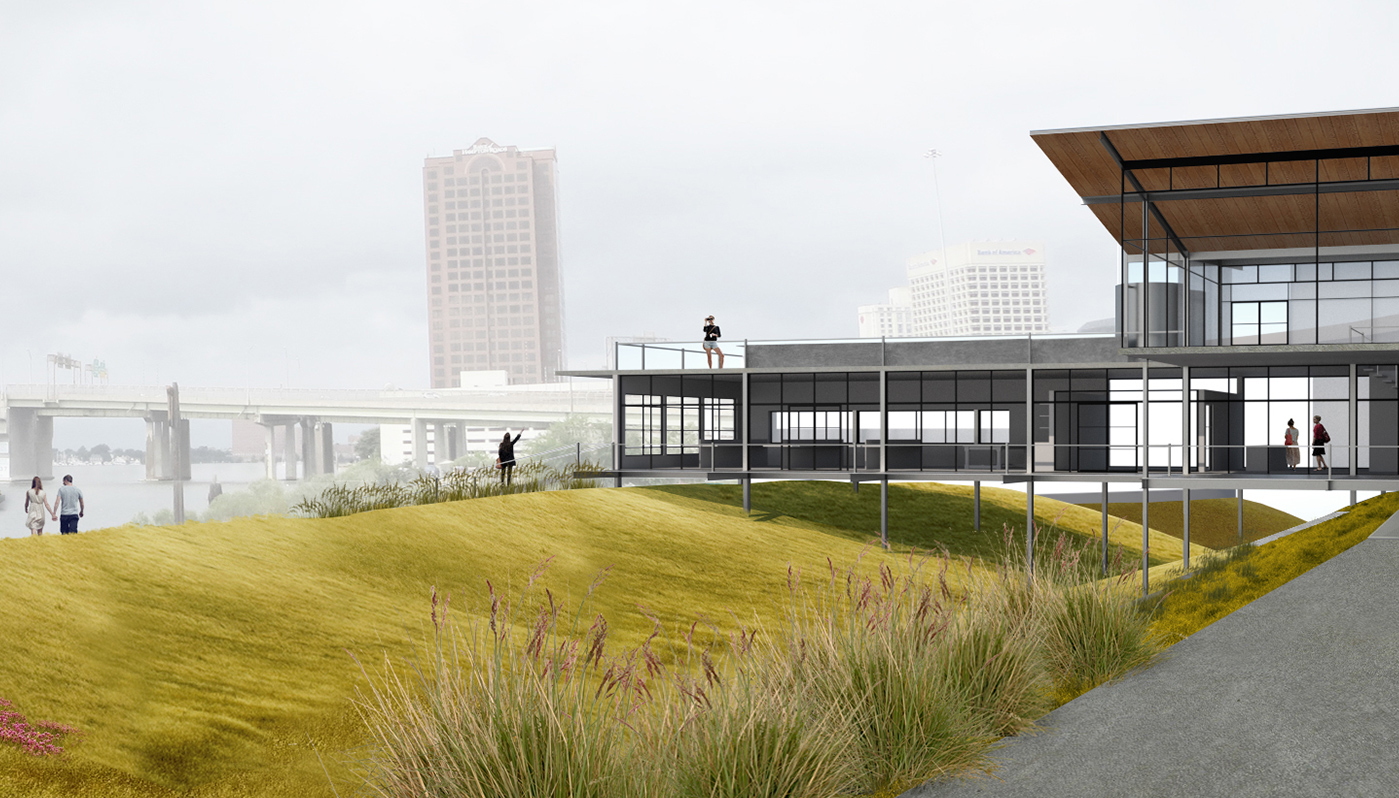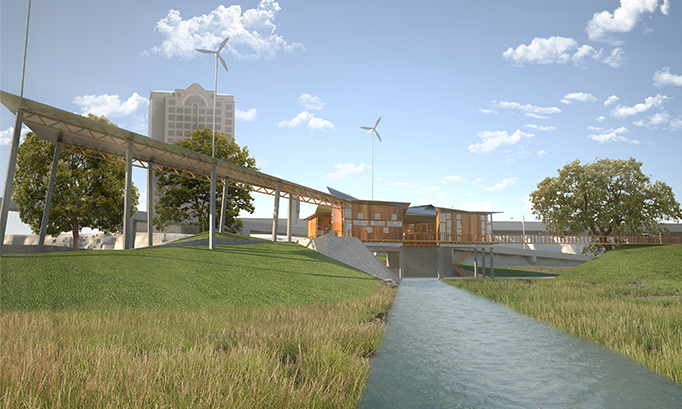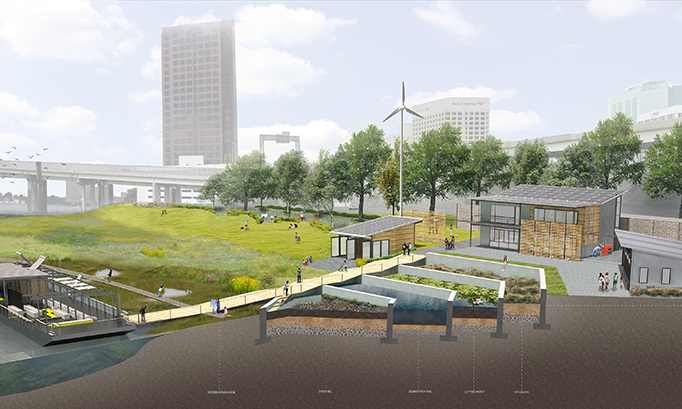University of Virginia faculty members are helping Virginia’s coastal communities rise to the challenge of encroaching seas – especially in heavily populated areas such as the one shown above in Norfolk. The Hampton Roads region faces some of the highest sea-level rise rates in the world.
“As a state institution, we have a particular obligation to engage in these issues that are a threat locally, nationally and globally,” said Associate Architecture Professor Phoebe Crisman, who directs UVA’s Global Environments and Sustainability program.
As a state institution, we have a particular obligation to engage in these issues that are a threat locally, nationally and globally.”
3-8 Feet
Sea-Level Rise Over Next Century in Hampton Roads
.12 Inches
Land Sinking Per Year in
Hampton Roads
162-877 Miles
Roads Could Be Flooded in Hampton Roads
The research is “incredibly urgent,” Crisman said. She emphasized the importance of analyzing costs, communicating with local officials and shoring up K-12 education to prepare future generations to cope with sea-level rise. Crisman has already designed and built a 120-foot “Learning Barge” floating classroom in Norfolk and advocated to make watershed education a required element of Portsmouth’s fourth-grade curriculum.



Clockwise from top, renderings by 2016 graduates Jenny Adair and Zeph Ruggles and master’s student Scott Levine show the students’ proposals for Norfolk’s Harbor Park, each one aimed at protecting nearby transportation links and other resources while creating a more resilient coastline.
Renderings by 2016 graduate Jenny Adair, master’s student Scott Levine and 2016 graduate Zeph Ruggles show the students’ proposals for Norfolk’s Harbor Park, each one aimed at protecting nearby transportation links and other resources while creating a more resilient coastline.



